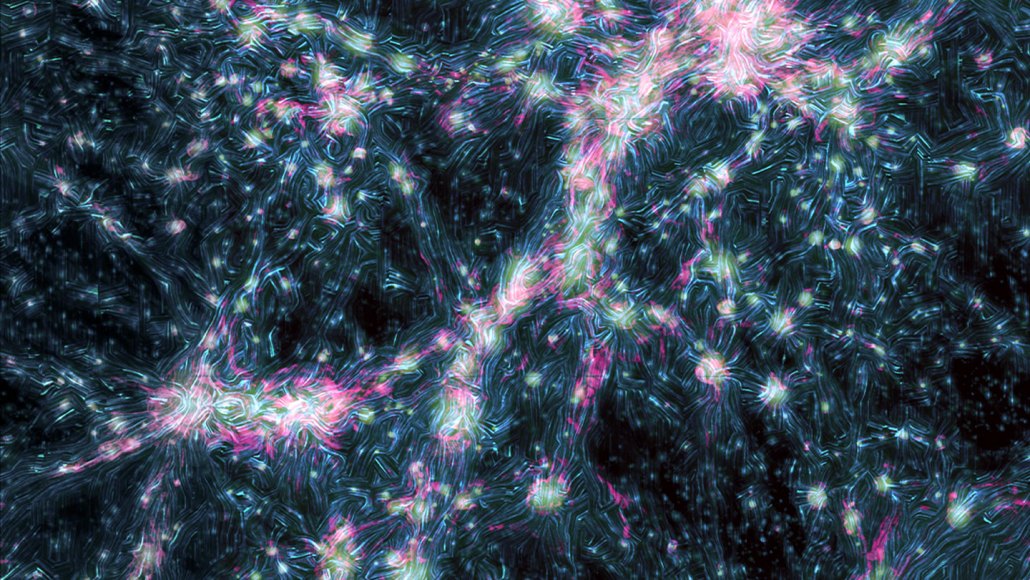Notable Scientific Milestones of 2023: Awe-Inspiring Achievements

This year, the scientific world has witnessed numerous unprecedented accomplishments. These revolutionary breakthroughs have significantly seized our interest.
First palpable proof that shockwaves ripple through the cosmic web, the universe's large-scale configuration, came from glowing strands of gas, galaxies, and dark matter (SN: 3/25/23, p. 14). Prior simulations forecasted that colliding strands would give rise to shock waves, propelling charged particles into the web's magnetic fields, hence developing a subtle glow. Radio telescopes' data confirmed that the shockwaves exist, validating this prediction. This glow also indirectly unveils the cosmic web's magnetic fields for the first time.
Mathematicians discovered an einstein tile, a term translating to "one stone" in German, after over half a century of research. This shape, referred to as "the hat", pairs with its mirror image to form a never-repeating infinite pattern (SN: 4/22/23, p. 7). Researchers later found a "vampire" einstein, which forms a non-repeating infinite pattern without needing its mirror image (SN: 7/1/23, p. 9). Einstein tiles, with their unique equilibrium between order and chaos, could trigger fresh findings in material science.
Oxygen-28, an ultra-heavy variant of the element produced in a particle accelerator, made its debut and lasted for a much shorter time than anticipated (SN: 10/7/23 & 10/21/23, p. 4). Despite having complete outer shells of protons and neutrons—typically associated with additional stability—the isotope disintegrated almost immediately post-formation. This short-lived nature of Oxygen-28 suggests a potential flaw in our understanding of the strong nuclear force, which binds protons and neutrons.
Scientists achieved the feat of extracting and decoding the RNA from an extinct species, the Tasmanian tiger, for the first time (SN: 11/4/23, p. 10). These fragile molecules, crucial for ensuring cells heed their DNA manuals, were sourced from a preserved specimen housed in a museum. This accomplishment fuels hopes of resurrecting the wolf-like marsupial that became extinct in 1936.
Corals can be flash-frozen and revived safely, researchers demonstrated, raising hopes that cryopreservation may aid coral conservation (SN: 9/23/23, p. 11). The key is to immerse corals in a solid metal container filled with a dehydrating solution before submerging them in liquid nitrogen. This technique results in the immediate solidification of any remaining water in the tissues, preventing crystallization and expansion.
A first-of-its-kind map of the Milky Way was charted without using light. Cosmic cartographers used a detector in Antarctica and artificial intelligence to chart nearly massless particles called neutrinos onto the galaxy’s plane. This provided a rough estimate of the birthplace of the first known high-energy neutrinos from the Milky Way (SN: 8/12/23, p. 13). This strategy, with further refinement, can help locate the birthplaces of other similar high-energy particles.
The compiling of the pangenome was accomplished this year, an initiative to catalog all components of the human genetic code (SN: 6/3/23, p. 6). This required the compilation and comparison of almost all DNA from 47 individuals, capturing the broadest representation of human genetic diversity to date. Eventually, researchers included the last piece: the Y chromosome (SN: 10/7/23 & 10/21/23, p. 7). The pangenome could illuminate the molecular underpinnings of fertility, heart disease, Alzheimer's disease, and beyond.
Astronomers have long speculated that stars consume planetary bodies, but it was not until this year that a star was observed in the act (SN: 6/3/23, p. 8). A sun-like star, approximately 10,000 light-years away from Earth, engulfed a planet roughly ten times Jupiter's mass. Over a few days, the star's brightness noticeably increased as it belched gas, an action attributable to the consumption of a partner star. However, the relatively meager energy discharged implied that the star had, in fact, devoured a planet.




